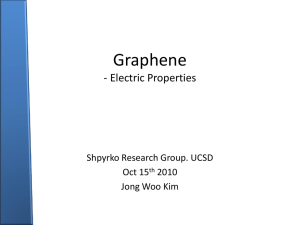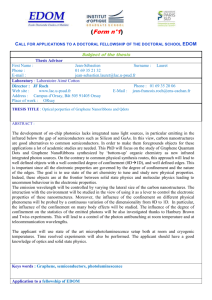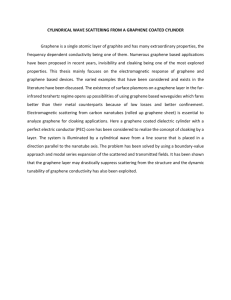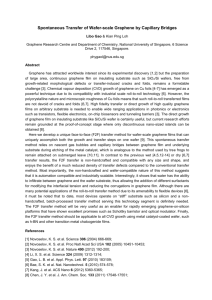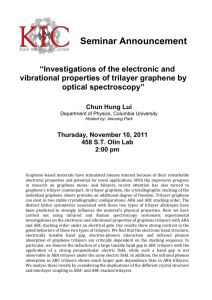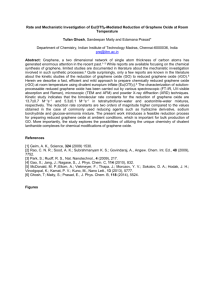Abstract Template
advertisement
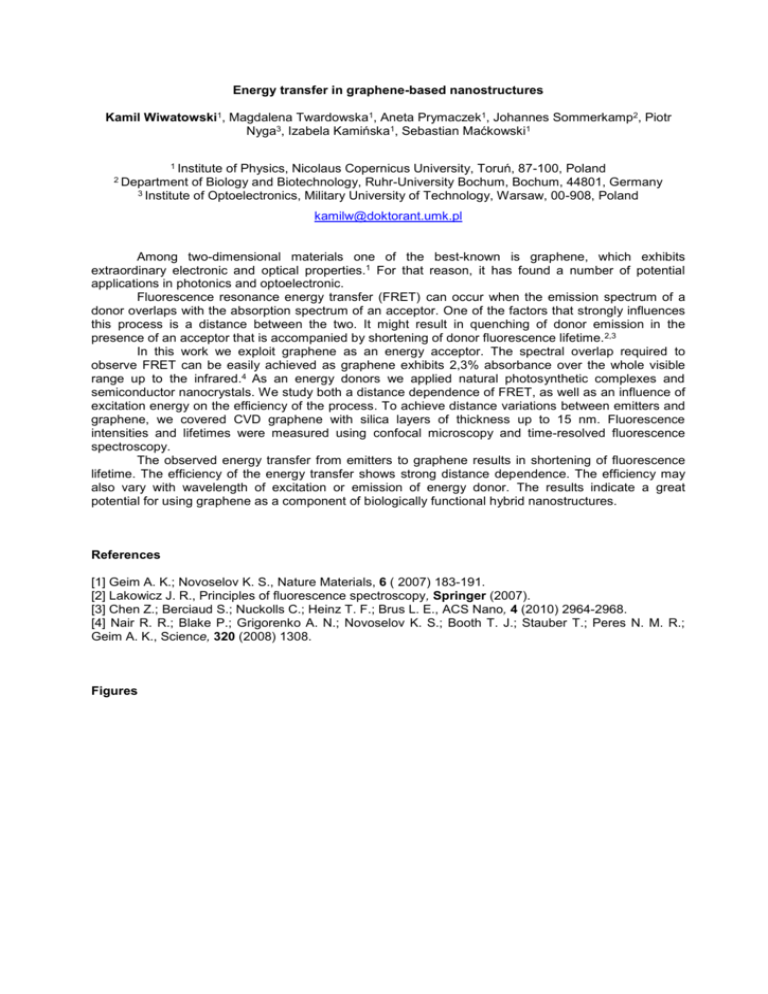
Energy transfer in graphene-based nanostructures Kamil Wiwatowski1, Magdalena Twardowska1, Aneta Prymaczek1, Johannes Sommerkamp2, Piotr Nyga3, Izabela Kamińska1, Sebastian Maćkowski1 1 Institute of Physics, Nicolaus Copernicus University, Toruń, 87-100, Poland of Biology and Biotechnology, Ruhr-University Bochum, Bochum, 44801, Germany 3 Institute of Optoelectronics, Military University of Technology, Warsaw, 00-908, Poland 2 Department kamilw@doktorant.umk.pl Among two-dimensional materials one of the best-known is graphene, which exhibits extraordinary electronic and optical properties.1 For that reason, it has found a number of potential applications in photonics and optoelectronic. Fluorescence resonance energy transfer (FRET) can occur when the emission spectrum of a donor overlaps with the absorption spectrum of an acceptor. One of the factors that strongly influences this process is a distance between the two. It might result in quenching of donor emission in the presence of an acceptor that is accompanied by shortening of donor fluorescence lifetime. 2,3 In this work we exploit graphene as an energy acceptor. The spectral overlap required to observe FRET can be easily achieved as graphene exhibits 2,3% absorbance over the whole visible range up to the infrared.4 As an energy donors we applied natural photosynthetic complexes and semiconductor nanocrystals. We study both a distance dependence of FRET, as well as an influence of excitation energy on the efficiency of the process. To achieve distance variations between emitters and graphene, we covered CVD graphene with silica layers of thickness up to 15 nm. Fluorescence intensities and lifetimes were measured using confocal microscopy and time-resolved fluorescence spectroscopy. The observed energy transfer from emitters to graphene results in shortening of fluorescence lifetime. The efficiency of the energy transfer shows strong distance dependence. The efficiency may also vary with wavelength of excitation or emission of energy donor. The results indicate a great potential for using graphene as a component of biologically functional hybrid nanostructures. References [1] Geim A. K.; Novoselov K. S., Nature Materials, 6 ( 2007) 183-191. [2] Lakowicz J. R., Principles of fluorescence spectroscopy, Springer (2007). [3] Chen Z.; Berciaud S.; Nuckolls C.; Heinz T. F.; Brus L. E., ACS Nano, 4 (2010) 2964-2968. [4] Nair R. R.; Blake P.; Grigorenko A. N.; Novoselov K. S.; Booth T. J.; Stauber T.; Peres N. M. R.; Geim A. K., Science, 320 (2008) 1308. Figures

